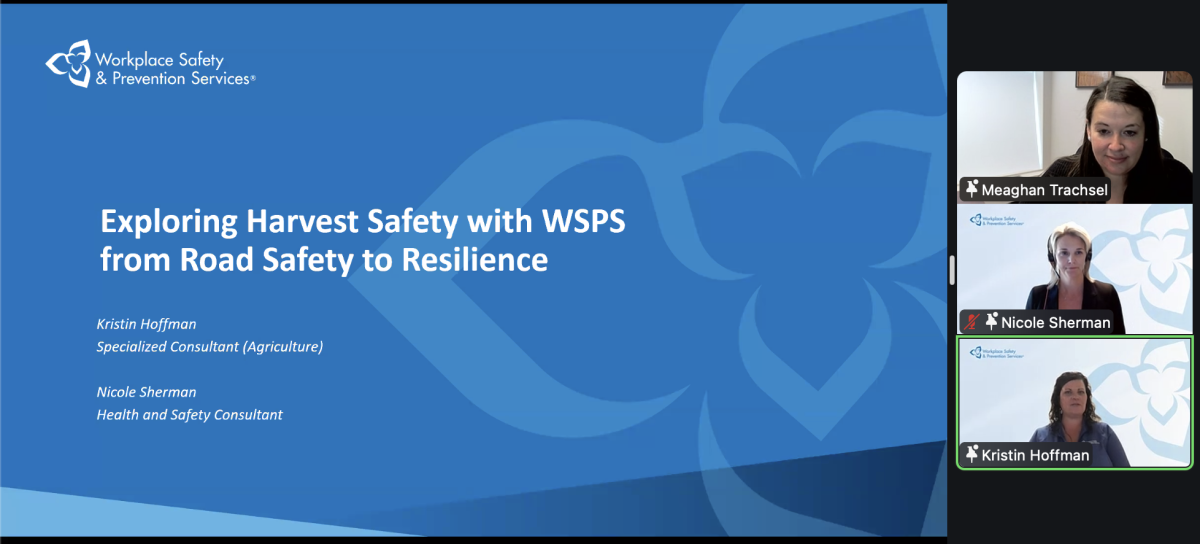A parliamentary committee is calling on the federal government to use legislative tools to help shore up broadband access for rural and remote areas of Canada.
The House of Commons’ standing committee on industry, science and technology, chaired by Vancouver area Liberal MP Dan Ruimy, on Tuesday released its report and recommendations for meeting federal targets on rural broadband connectivity.
The Canadian Radio-television and Telecommunications Commission (CRTC) in 2016 declared broadband internet to be an “essential service” in Canada and set minimal performance standards of 50-megabit per second download and 10 Mbps upload, working with Innovation, Science and Economic Development Canada (ISED) to fund broadband deployment in rural and remote areas.
Read Also

Exploring Harvest Safety
Kristin Hoffman of WSPS explains measures for increased farm safety around harvest season
However, the committee wrote, evidence it received from various stakeholders shows the digital divide to still be “prominent” in Canada and the CRTC targets “may not be appropriate to all rural and remote areas.”
Licensed incumbents in the broadband sector “tend to only invest in high-density areas that are more economically profitable,” the committee wrote, but if Ottawa were to “adapt” its regulatory framework, particularly on spectrum and network management, “small providers, non-profit providers or non-incumbent providers” could deploy rural broadband in “an economically profitable manner.”
The government also needs to “consider ways to increase the accessibility of funding programs for small providers, non-profit providers and non-incumbent providers, and consider the spectrum allocation process for the purpose of broadband deployment.”
Ottawa also needs to take steps, possibly through legislation in tandem with the provinces, for such providers to be able to accessing “existing infrastructures for the purpose of deploying broadband access,” such as granting easements or servitudes, “especially in regards to utility poles.”
The government also needs to consider the spectrum allocation process, focusing on the “scope of licences, pricing and effective use of allocated spectrum, including ensuring that small providers, non-profit providers, and non-incumbent providers have reasonable access to spectrum for broadband deployment.”
The committee also urged the government to “consider new ways of collecting service and performance data in addition to the speed of internet services, including, but not limited to, adding new indicators, using local knowledge.”
The CRTC, the committee said, should also consider not only broadband speed, but other indicators in its targets, such as “standards of parity between urban and rural centers, network performance, purchased consumer packages, latency and redundancy.”
(“Latency” refers to the time it takes for a given signal to get from a transmitter to a receiver, usually measured in milliseconds.)
The CRTC should also consider “regularly reviewing” its target broadband speeds to make sure they “remain relevant with technological development and international standards.”
Some witnesses during the committee’s hearings on the matter cautioned that the CRTC will have to “regularly update” its broadband speed targets “to keep up with technological change.”
Corroborating those witnesses, the committee said, is “the fact that actual broadband speeds in Canada substantially lag behind many countries that invest more in digital infrastructure.”
A monitoring report, the committee said, shows 99 per cent of Canadians living in rural areas have some form of internet access, including wireless, but to speeds between 1.5 and 4.9 Mbps — and only 42 per cent have access to speeds between 30 and 49.9 Mbps.
“Thus, while most Canadian communities do have Internet coverage, in many rural communities, the available speeds are so low that they only allow for a limited number of uses.” — AGCanada.com Network
















